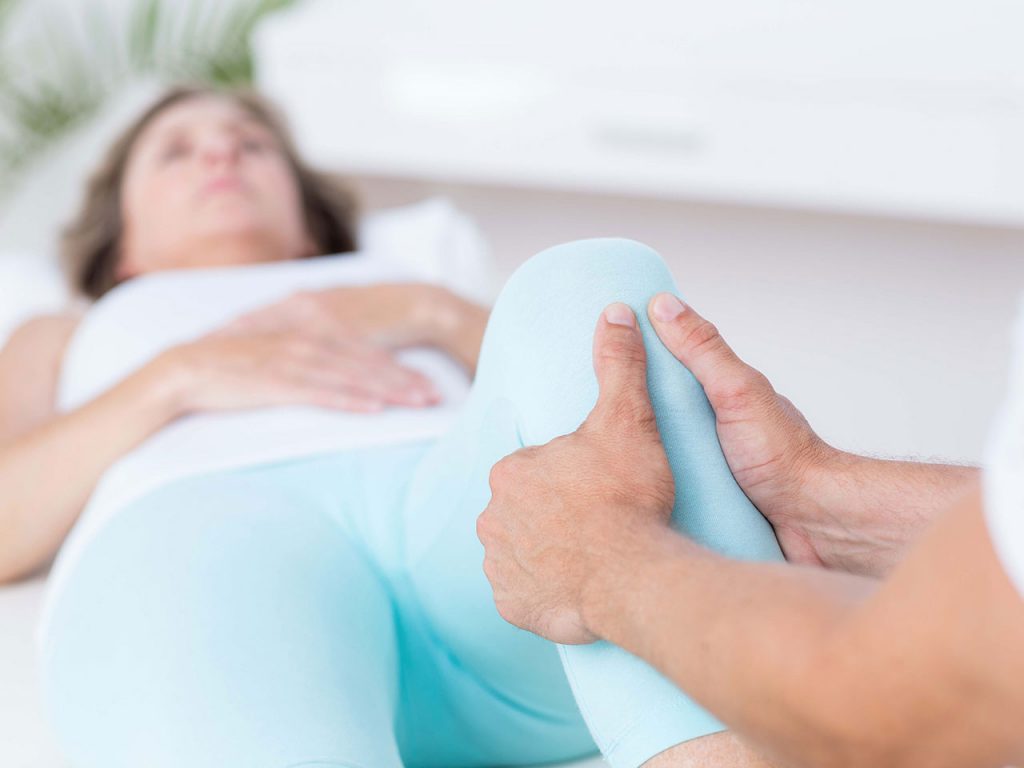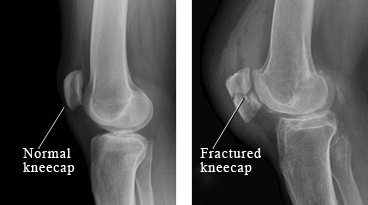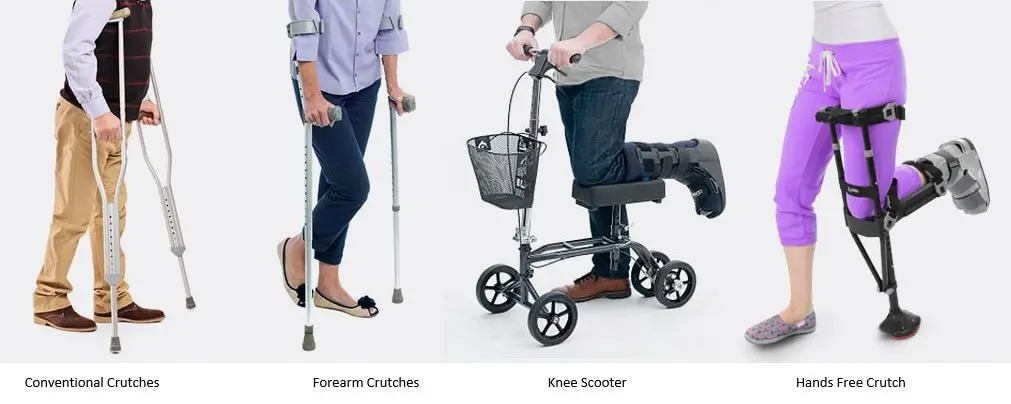A broken or fractured kneecap is not the most common type of fracture, but it is undoubtedly one of the most difficult to handle. there’s actually no complete method to fix all kinds of kneecap fractures.

As you will see in this article, there are many types of kneecap fractures, and even though it’s not a good idea to walk around after an injury that results in deformation of your knee, there ARE ways to get back on track and recover your mobility and ability to walk after enduring a fractured kneecap.
Kneecap fractures and twisting injuries
Knee pain is increasingly common after we age, and may result from trauma and aggressive twisting movements when playing sports. The most common causes are inflammation or a partial tear of ligaments, but sometimes a very aggressive trauma might also result in injuries to your kneecap or patella. This structure is very solid and mobile. It is also covered by other anatomical structures, so it is not common to endure a fracture or dislocation unless a great deal of force strikes the knee as in a car accident, a very bad fall of an overweight individual, a gunshot, and others.
Kneecap or patellar injuries are divided into two main types: a dislocation, when the kneecap is forced out of place, and patellar fractures when it’s broken. Moreover, a patellar fracture can be comminuted when it’s broken in several pieces, transverse or vertical when it’s broken in two parts, and osteochondral when it involves the cartilage that is found at the bottom of the kneecap.
Can you walk right after a kneecap fracture?
The knee is one of the areas with a broader range of movement in the body, and it is heavily used throughout the day. It is essential to maintain balance in the body, as it carries a considerable hefty weight every step you take, and aids in the movement, which is why people with a kneecap fracture have severe mobility issues after enduring knee trauma.

Thus, it is not a good idea to keep on walking and moving around right after enduring a kneecap fracture. They make your knee look different and deformed, and trigger significant swelling and pain that limits your movement and may lead to losing your balance. You may also note a visible gap in the central area of your knee if there is no blood blocking your view.
If you have experienced and note any of the signs and symptoms we mentioned above, do not try to move or walk with a broken kneecap! You should go to the emergency room as soon as possible. There are many different treatment modalities available to recover from a fractured patella, and in some cases, more than one surgery will be required to regain full mobility of the affected limb.
Immobilization and rehabilitation of a kneecap fracture
Either or not you need surgery to bring together the pieces of your kneecap, in most cases, it will be necessary to immobilize the affected leg with a cylinder cast. This is because your kneecap receives a significant portion of the tension in your quads and will be completely torn and unlikely to heal if you keep moving your leg muscles. When your articulation is immobilized, it will be possible to walk around with your kneecap fracture. This type of immobilization usually lasts for a couple of weeks, and it is followed by a splint or a hinged knee brace, or even crutches especially in cases of surgery because your doctor will need to take care of the surgical wound after a few days.
After this immobilization time, which may typically last for 4-6 weeks, you will be able to walk once again without an immobilizer, but it will be a good idea to use a cast because your quadriceps will become weak after such a long period without any type of physical activity. Thus, rehabilitation will be the next step to recover your mobility after a kneecap fracture.
Fractures of the Knee Cap (Patella)
Rehabilitation or physiotherapy is the last stage in the recovery of a patella fracture, and it should be performed under the guidance of your doctor and always supervised by a physiotherapist. If you want to regain your mobility and walk again normally as you did before, don’t miss an appointment and complete the exercises recommended by your physiotherapist at all times.
What you can do
Any step you want to take in this recovery period should be supervised by either your doctor or your physiotherapist before you try anything new. Besides your physio appointments, there are many things you can do at home at various stages of your recovery, and one thing that may be helpful when you have regained some strength in your quadriceps will be exercising in a static bicycle or pedal exerciser. This works fantastically to increase your range of motion while most physio exercises are meant to strengthen your quadriceps.

So, if you asked a doctor whether or not it is possible to walk after a kneecap fracture, the recommendation will be trying to immobilize the affected limb until it is examined by a doctor.
After your articulation has been treated and properly immobilized to bring together the pieces of your kneecap, it will be possible to walk once again, and the limitation will depend on your own capacity.
If your patellar fracture is not severe, you may not need a full immobilization with a cast but will be recommended to use a hinged knee brace. In this case, limit your walking to the essentials to perform your daily activities and do not engage in physical exercise involving your lower extremities unless recommended by a doctor.
CHECK BEST PRICE FOR HINGED KNEE BRACE ON AMAZON
In the following table, we will show you what you can do to regain your mobility in each step of the rehabilitation process.
| After enduring knee trauma | During cast immobilization | During splint immobilization | During physiotherapy | |
| What to do | Don’t hesitate and go to the doctor’s office | It will be possible to resume your daily activities but no strenuous exercise involving your lower extremities. Limit physical activity to the absolutely essential. | Keep your appointments and complete your daily set of exercises.
Try exercising with a static bicycle to regain your range of motion after talking to your doctor. |
|
References:
Schenck Jr, R. C., McGanity, P. L., & Heckman, J. D. (1997). Femoral-sided fracture-dislocation of the knee. Journal of orthopaedic trauma, 11(6), 416-421.
Anand, S., Hahnel, J. C. R., & Giannoudis, P. V. (2008). Open patellar fractures: high energy injuries with a poor outcome?. Injury, 39(4), 480-484.
Catalano, J. B., Iannacone, W. M., Marczyk, S., Dalsey, R. M., Deutsch, L. S., Born, C. T., & Delong, W. G. (1995). Open fractures of the patella: long-term functional outcome. Journal of Trauma and Acute Care Surgery, 39(3), 439-444.
Luo, T. D., & Pilson, H. (2018). Fracture, Patella. In StatPearls [Internet]. StatPearls Publishing.

